|
|
|
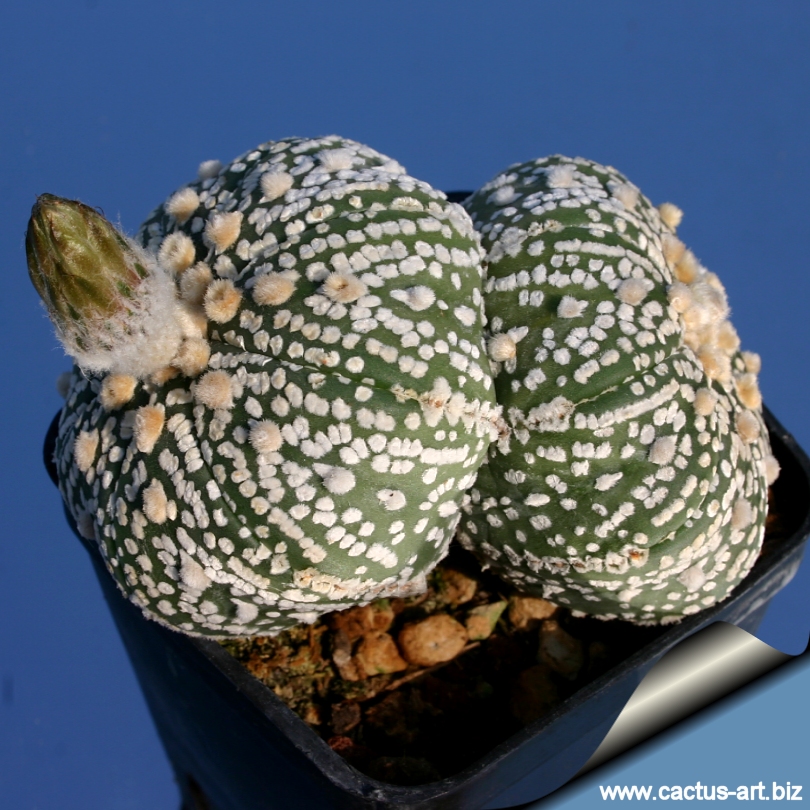
Astrophytum asterias cv. Superkabuto.
|
|
Stories and legends:
Astrophytum asterias 'Super Kabuto' with its inimitable fuzzy
epidermis is actually the most popular cactus cultivar.
It is easily distinguished from the normal
A.
asterias by the epidermis, that does not have simple dots, but a
mosaic of extensive white spots that make the plant look intensely
maculate.
Superkabuto would (probably) come from a mutation that occurred in
nature to just one field-collected individual A. asterias found
in 1981 by the Japanese Mr. Masaomi Takeo in an American garden centre
and sold to Tony Sato at a high price in Japan.
Propagations have been made possible by cross-pollinating this fist
plant with other normal A. asterias and A. capricorne (and
possible other Astrophytum species too), it can be concluded that
all the SK actually available are the result of intraspecific
hybridization and SK contains not only A. asterias genes but also
a significant number of A. capricorne genes, and maybe others. As
a result spiny clones appear rather often and the name Astrophytum
asterias cv. Super Kabuto is not quite correct.
|
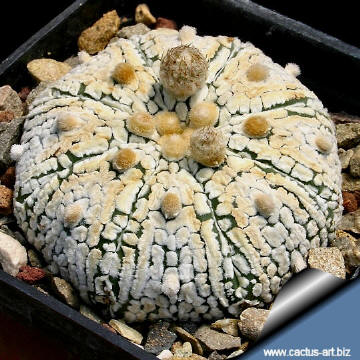
|
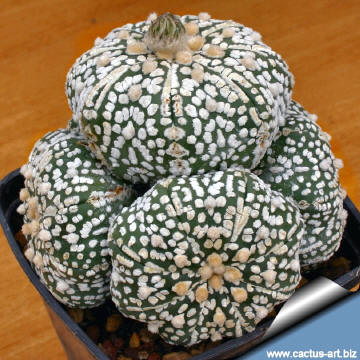 |
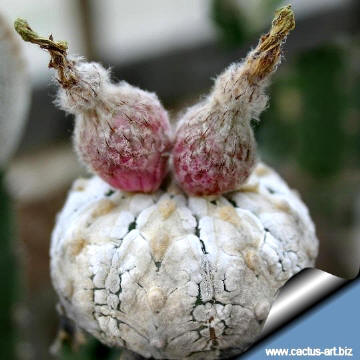
Fruit
|
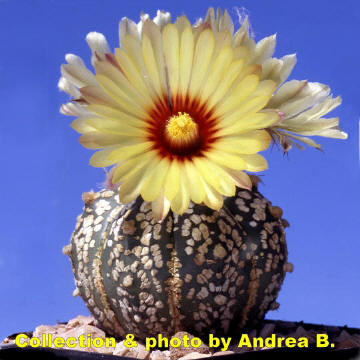
Flower
|
|
Many different beautiful forms of
'Super Kabuto' , which differ for the diverse pattern of the spots are
now available. It would be difficult to mention them all: they range
from completely white forms ('white-type'), to forms with woolly spots
('snow-type'), to forms with a maculation like the shape of fly's wings
('zebra-type' or 'V type').
|
|
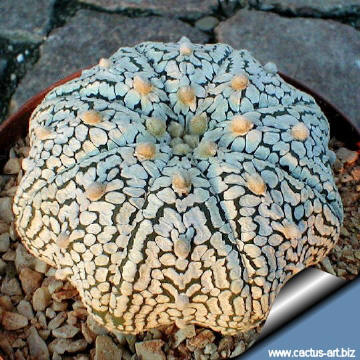
|
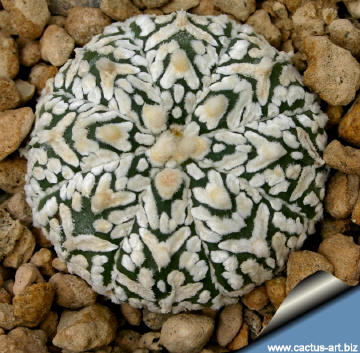
|
Cultivation is not too difficult in a
greenhouse, although grows
quite slowly. The plants need a loose well-drained
mineral soil. They need a good amount of
light.
Watering can be done weekly during
summertime, if the weather is
sunny enough, with a little
fertilizer added. Kept this way, plants will
show a
healthy, although slow
growth. They are
frost hardy to -4°
(-10°) C
Be careful: The epidermis of Superkabuto is harder than in
the normal asterias and cracks easily if plants are overwatered.
|
|
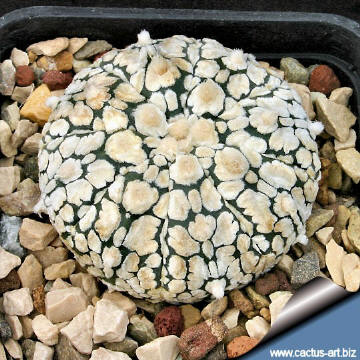
|
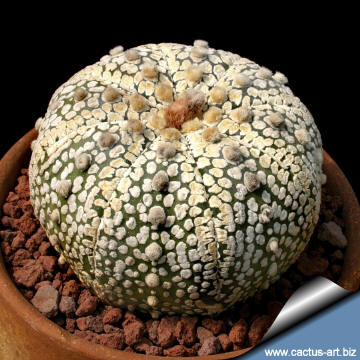
|
|
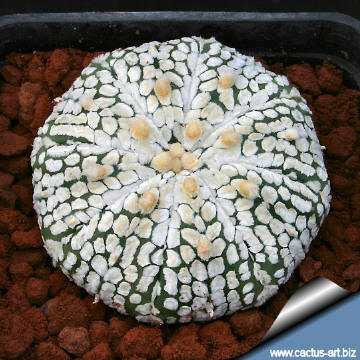 |
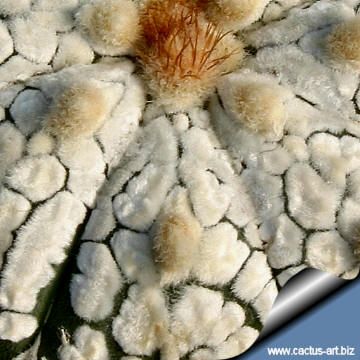 |
|
Advertising
|
|
|
|
Scientific name:
Astrophytum asterias
(Zucc.)
Lem
cv. SUPER KABUTO
Origin:
Garden origin
(Nursery produced cultivar)
Conservation status: Listed in
CITES appendix 1.
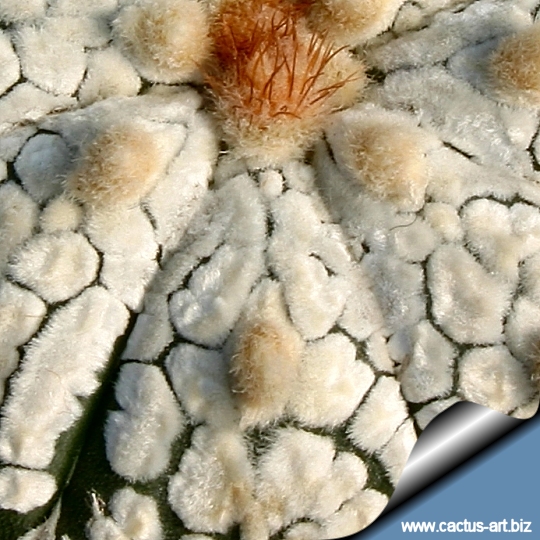
The typical
hairy scales
|
|
|
|
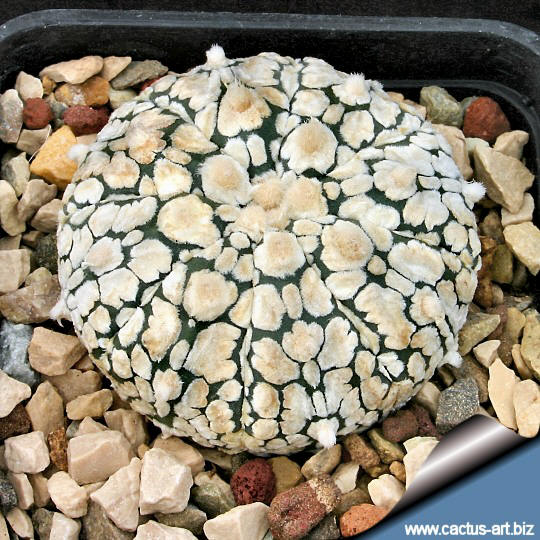
Some individuals are unique and inimitable
|
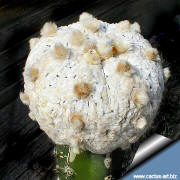 |
 |
|
Snow type |
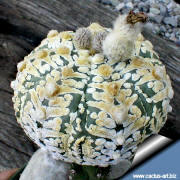
|
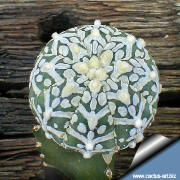 |
V type
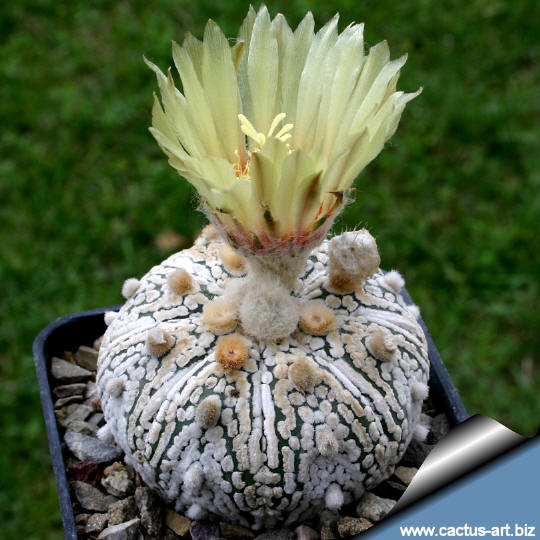 |
|
Propagation:
By
seeds, remembering that
seedlings dislike strong
light and
dry conditions and need to be
repotted frequently. Eventually, as they become mature, they attain a
maximum size of 8-10 cm (20) cm. However, old plants become
senile and have
a tendency to succumb to
disease and a weak
root system. At this
stage,
as is well known, they
die suddenly. So, after they reach
10 cm in
diameter grow them slowly, and adopt a new repotting period, using
intervals of every 2 - 3 years. Additionally grow them under drier
conditions or with stronger sunlight. But plants are often
grafted to accelerate growth as
they would generally take at least a five years to reach
maturity on their
own, but the grafted plants are typical rather tall growing, compared
with plants on their own roots that are usually more flat to the
ground.
|
|
Photo of conspecific
taxa, varieties, forms and cultivars of Astrophytum asterias:


|
|